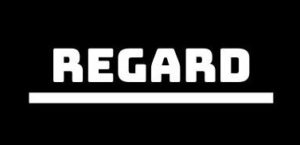Japanese spacecraft collecting asteroid specimen landed in the Australian desert. We will soon find out how many asteroids the Japanese spacecraft has collected. The spacecraft is trying to be in the forbidden area where it crashed.
The place where the Japanese spacecraft HAYABUSA2 crashed is being searched.
After spending six years in space, HAYABUSA2 landed a capsule in the southern Australian desert and brought a small amount of asteroid rock to Earth. It’s only the second time in history that material from an asteroid has been brought to our planet. Eventually, scientists will open up the capsule to reveal the precious rocks inside to learn more about the asteroids that have penetrated our solar system.
After the HAYABUSA2 spacecraft launched from Japan in 2014, it spent four years traveling on an asteroid called Ryugu. The vehicle hung around the asteroid for a year and a half. He mapped the surface of the asteroid and took material samples before returning to Earth.
Japan Space Agency mission managers celebrate the return of HAYABUSA2 to earth
The capsule will be transported to Japan, where we will find out how much asteroid material we have collected on the mission. The Japanese Aerospace Research Agency (JAXA), which oversaw the mission, hoped the vehicle would bring 100 milligrams of material from the asteroid Ryugu. But there was no way scientists could measure how many samples HAYABUSA2 collected while in space. The exact amount will be revealed when the spacecraft opens in Japan.
After making sure that enough samples were taken from Ryugu, the spacecraft left the asteroid in November 2019. After spending the last year traveling to Earth, the spacecraft released a small capsule containing samples of Ryugu into our atmosphere Friday night. The capsule plunged into the atmosphere of our planet yesterday morning and took a course towards Earth. A parachute then opened and the capsule slowed to about 12 kilometers per second, landing slowly into the Woomera Restricted Zone in southern Australia.
JAXA teams did a lengthy search in Australia to find the capsule. The capsule landed on an area of about 100 square kilometers. He also landed in Australia at night, making the capsule harder to spot. Fortunately, the capsule was equipped with a radio beacon that helped the teams find where the capsule landed on the ground. Before landing, JAXA teams installed five antennas around the expected landing site to help find the signal. The agency also had a helicopter with its own beacon receiver to help narrow the search. A drone flying from the top of the area was also present to take photos.
Now, the eyes of the whole world are focused on the statement to be made by the Japanese Space Agency.
